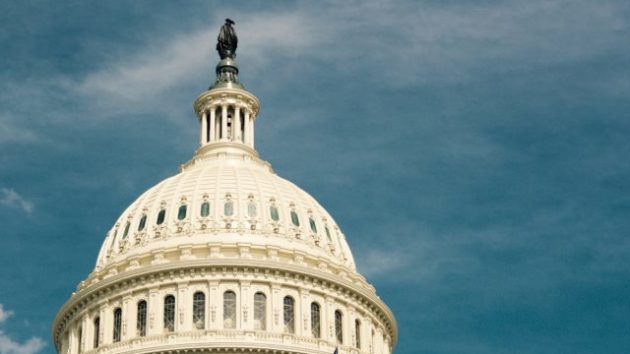New Supreme Court Session Shows Need For Legislative Override
With the advent of October, comes the start of the Supreme Court’s session. As the Court enters the session with only eight members, there is no tiebreaker. If there is an equal vote, then the lower court’s decision will stand.
And there is no shortage of cases awaiting it.
Weyerhauser Co. v. US Fish and Wildlife questions the Endangered Species Act and the owner’s right to challenge the designation of private land as critical habitat. In Madison v. Alabama, the court is asked whether the Eighth Amendment allows for a state to execute a prisoner who can’t remember his or her capital offense because of mental disability. And Knick v. Township of Scott, Pennsylvania, asks whether the ruling in Williamson County Regional Commission v. Hamilton Bank requiring that property owners exhaust state court remedies prior to being reviewed in federal court should be overturned.
Overall, there are 20 cases slated for consideration in the October docket. Many of these cases will have a big impact on our rights, our liberties, and upon the future interpretation of our Constitution and statutes.
While most of us enter this latest Supreme Court session with thoughts of the impending judicial nomination, the circus it has become, and the impact these proceedings will have on the Court’s future, the greater question remains unaddressed; namely the role of the Court and the checking of its power.
In a discussion with Judge Gregory Maggs hosted by the Supreme Court Fellows Program, Justice Clarence Thomas spoke of his conscious effort at checking his own ability to influence the future interpretation of the Constitution by reminding himself that it was someone else’s Constitution he was writing on. Christopher Scalia, the late-Justice Antonin Scalia’s son, related his father’s concerns of how much of what the modern Court does rightfully belongs in the legislature. And Sen. Ben Sasse echoed the sentiment in between circus performances at the Senate Judiciary Committee’s Hearing last week.
Once again we enter a Supreme Court session under the effects of the Court’s power grab in Marbury v. Madison. Indeed, Justice John Marshall’s determination that it was up to the Supreme Court to decide what was constitutional and what was not is at odds with the views of many of the Framers.
George Washington, in his Farewell Address, warned of the importance of changing the Constitution through the amendment process and not by usurpation as the latter was the “the customary weapon by which free governments are destroyed.” And Thomas Jefferson (who was not a Framer of the Constitution) warned that allowing judges to be the ultimate arbiters of all constitutional questions “would place us under the despotism of an oligarchy,” and cautioned that such an arrangement would have never been accepted by the Delegates to the Constitutional Convention.
So, we enter another session with the balance of power skewed in the direction of the judiciary. To a great extent, every law passed by Congress is essentially a trial balloon floated to see if it passes muster before a board of appointed reviewers. Literally, the nature of our liberties hangs at the unchecked hands of the Court, which in today’s environment is able to overturn practically any rule, statute, ordinance, or law at its whim, and when it does so on constitutional grounds, there is nothing the other branches can do about it other than capitulate.
Such a power is at the very least disconcerting and inconsistent with a government that is designed under the construct calling for a balance of powers between three co-equal branches of government.
And once again, we are faced with the question of what to do about it. Yes, one answer is to get better judges. But hiring great people to work within a certain branch of government is not a check on that branch’s power. The real solution is to create an external impediment on the branch. In this case, it is a step that should have been implemented in the nineteenth century in direct response to Marshall’s opinion.
The most logical correction is a legislative override amendment.
Under this provision, a supermajority of the legislature would be able to override an opinion of the Court and keep a statute operational. The override provision has been adopted by Canada, Israel, the European Union, and Australia, among others, and it is one proposed by Madison himself to Thomas Jefferson when the latter penned a draft of the Virginia Constitution.
In a nutshell, once the Court issues an opinion, Congress would have four years to override it through a supermajority vote of about 60%. In such instances, the law would remain operational despite the opinion of the Court. At the very least, such a provision would have a chilling effect on activist judges. It would send legislation back to Congress for consideration and debate, and it would allow a ruling inconsistent with the will of the vast majority of the American people to be nullified.
If there is one thing the Kavanaugh nomination proceedings teach us is that the Supreme Court is as political a body as any other. Knowing this, then why ought it be given full reign on the interpretation of the nation’s governing document?
The question we must be asking ourselves is, to whom does the Constitution belong?
If the Constitution of the United States belongs to the Supreme Court, then we have no right as citizens to tinker with the Court’s opinion on the document’s interpretation. But if the Constitution belongs to we the people, which I believe it does, then we must demand an instrument by which we may overrule the opinions of errant judiciary, i.e. a legislative override.
EDITORS NOTE: This column originally appeared in The Revolutionary Act. The featured photo is by Jomar on Unsplash.



Leave a Reply
Want to join the discussion?Feel free to contribute!